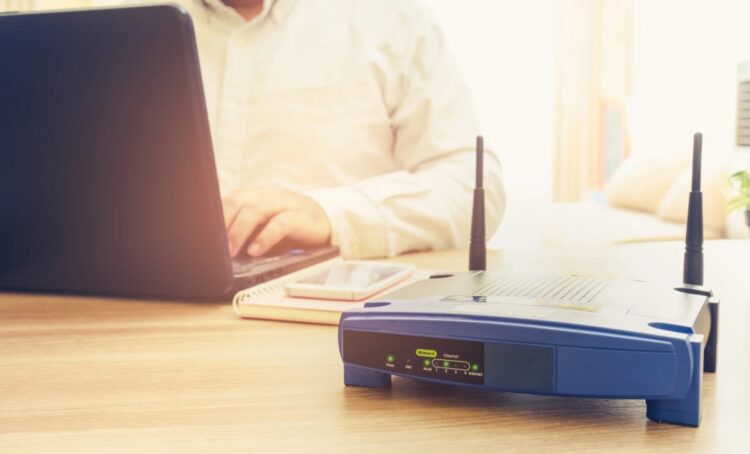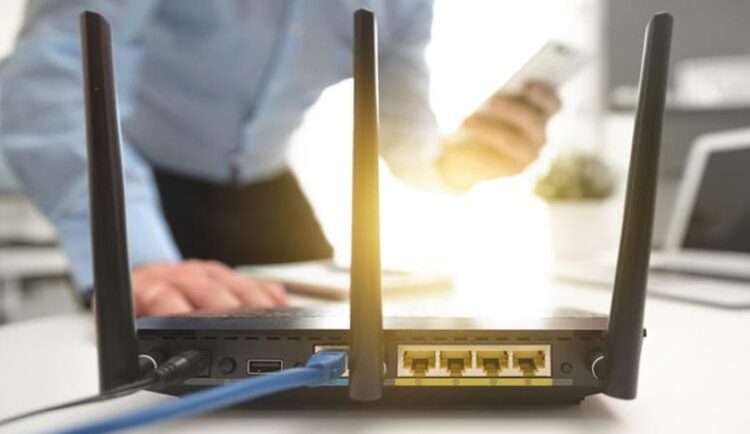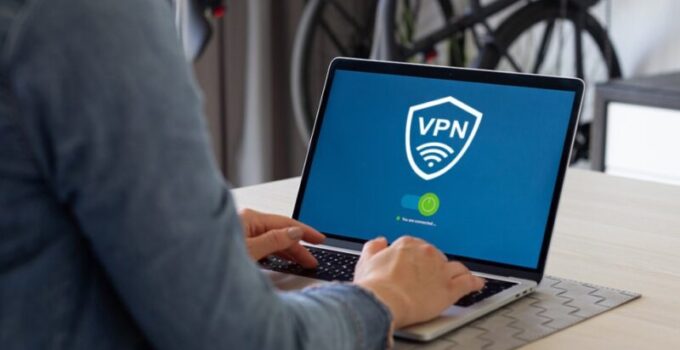A VPN is a powerful tool to hide your online identity and keep you anonymous while you surf the internet. It keeps you safe on unreliable networks and prevents your sensitive information from getting compromised.
Because attackers can manipulate weakly encrypted networks. Like the public Wi-Fi of your nearest coffee house or your school’s private network. As some WiFis still use outdated encryption methods, hackers can find their way into it and prey on the personal data of the users connected to that network.
Worst case scenario, imagine if some hacker sets up a fake WiFi network in the name of your nearest cafe or public library and you connect to it. But all this can be avoided with a VPN connection.
When you’re using a VPN, your internet traffic travels through a secure tunnel and all your personal data is encrypted through a VPN server. This means that even your ISP or government agencies are unable to monitor you. Setting up a VPN is easy. All you need is a VPN subscription to one of the reliable VPN providers. Then you need to download the app on your device, launch the VPN app and connect to a server.
But most VPN providers have limits on simultaneous connections – the number of devices you can use at the same time with a VPN. In this case, you wouldn’t be able to cover all your devices with a single subscription plan.
Although if you run your own VPN server, all the devices connected to that network will have a secure line. And according to howdoesavpnwork.com, you can easily set up a VPN at home. You can even cover entertainment and IoT-based devices that have no support for native VPN apps. For instance, your smart fridge, gaming console, or Roku device. Anything that can connect to the internet. But how can you do that? How can you set up your own private server and host it? Well, there are multiple ways. So let’s go through each so our sensitive information can be safe from prying eyes.
Page Contents
Use a VPN Router

Source: expertreviews.co.uk
To set up a VPN server on your router, you first have to make sure that your router has VPN functionalities. But if you don’t have a VPN router then this method will not work. You need to visit the configuration page of your router. Then log in with the administrator credentials. Search for the VPN tab.
Then you have to create a VPN profile by following the system-specific instructions. You’ll need to enter the details provided by your VPN service and once you’re done with that, all your traffic travels through a secure VPN server.
And if you can’t find a reliable VPN provider then ExpressVPN is a good choice. It has a dedicated router app and you can easily configure it on your router. Buying a VPN router can be expensive but if you’re considering switching to a VPN router then here are some decent purchases you can go for.
- Linksys WRT 3200
- Asus RT-AX58U
- TP-Link Archer C5400
Flash Your Router’s Firmware

Source: hp.com
The first option might not work if you don’t see a VPN tab on your router’s admin panel. But there is another way from which you can still set up a VPN on your router. By flashing your router’s firmware. Just make sure that your router supports third-party firmware like DD-WRT, Tomato, or OpenWrt.
Flashing simply means that you’re upgrading your firmware to have better performance, compatibility, and functionality. And in this case, what you’re doing basically is changing your router’s operating system to enable the VPN feature. Once that’s done, you can host your VPN server.
It’s rather a cost-effective method and the best part is that you’ll be more in control of everything. But flashing can be a risky process because if you mess up during the procedure then you might face issues while running your router. So be spot-on with your research and carefully follow everything till the end.
Moreover, you can also get a pre-flashed router. There are some companies like FlashRouters, which can provide you with an already flashed ready-to-use router. But don’t fall for other scams and only order when your hundred percent sure about it.
Use Cloud Services For Your VPN Server

Source: eweek.com
This method can come in handy if you don’t want to manage your VPN server yourself. Because a third-party service like Google Cloud, Microsoft Azure, or Amazon Web Services can handle all the work of managing your VPN server.
Let’s suppose we choose Amazon Web Services. To set up your VPN server, first, create an AWS account by visiting the main page. Then you have to pay for the cloud services. You have to download the algo dependency files on your computer and then run some commands. The setting up process for Windows, macOS, and Linux can differ from each other.
You’ll need to select users that can connect to your server, choose a provider, and copy-paste your AWS access keys wherever necessary. Then set up profiles on client devices so that you can connect to your VPN server from other devices.
Bottom Line
The easiest way to use a VPN and secure your internet traffic is to subscribe to a reliable VPN provider and connect to a VPN server by the app. But if you want to cover unlimited devices, cut some cost, or you just have a thing for new learning experiences then setting up a private VPN server is the best option.





